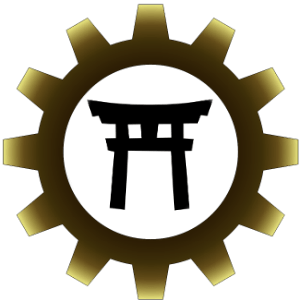Shintoism

Shinto The indigenous and animistic philosophy/ religion of Japan, which provides a bridge between the living and their ancestral spirits, ancient gods and supernatural forces. Shinto is also polytheistic and shamanistic in nature. The divine manifests in all natural phenomena.
“Shinto” means “the way of the kami,” which in turn approximately means “gods” or “spirits.” Kami are not so much beings as they are transcendent, sacred forces or essences that inspire awe and reverence. Every life form possesses its own kami-nature, as do the elements.
Shinto has unknown origins; the earliest extant records are from the 8th century. Originally, it was not a religion, but a way of life, a philosophy of the interwoven nature of the world and the cosmos. It has no central authority, no doctrines and no scriptures. Nonetheless, it has had a powerful influence on the Japanese way of life, fostering an understanding of the interconnectedness of all things, and a need for harmony. It has integrated into it elements of Buddhist religion and Confucian philosophy.
The supreme kami is Amaterasu Omigami, the Sun Goddess, who is regarded as the protector of the Japanese nation and people. In myth, Amaterasu was born to Izanagi and Izanami, the kami who created Japan as the most beautiful place in the world. Their myriad offspring were sent to give kami-nature to the earth in its elements, geophysical formations, animals and people. Typically, kami have no names but are identified by general characteristics associated with locales, clans, villages and families. They are worshipped at communal shrines. The kami are believed to intervene in the affairs of humans for either good or evil, as do Demons and angels. Shamanistic mediums communicate with kami and seek their favours or exorcise them if they are causing bad luck or illness.
Besides the kami, Shinto also worships ancestral spirits of clan chieftains and venerated humans who achieved great spiritual awareness during life, or who exhibited great heroism or even great evil. The remains of such persons are enshrined. Their spirits are petitioned for favours and intercession.
Shinto shrines are usually a thatched roof supported by pillars. They are located near fresh water, which is needed for purification. The gateway to the shrine, called the tori, marks the threshold between the ordinary and sacred worlds. Inside the shrine are rocks or Mirrors, which represent the kami. Symbolic offerings are short sticks with paper streamers attached.
In Shinto homes, small altars called kamidama (“godshelf”) are kept in a living-room closet. Family members pay homage to kami with daily offerings of rice, salt, water and food. Household Shinto revolves around domestic affairs and rites of passage.
During the 19th century, Shinto became a state religion in Japan; various sects developed. Alongside Shinto was tennoism, or worship of the emperor, which dates back to third-century Japan. The emperor was regarded as an offspring of the creator kami, an arahito gami or “living god,” and as the intermediary between the Japanese nation and Amaterasu. Following the defeat of Japan in World War II, the emperor was forced to renounce his divinity and State Shinto was abolished. It survived as a sectarian religion. When Emperor Hirohito died in 1989, he was given a Shinto burial, the first state Shinto ceremony to take place since the end of the war.
Sectarian Shinto includes sects that pursue mystical and ecstatic experiences through pilgrimages to Mount Fuji, ecstatic dancing and firewalking. Other sects devote themselves to spiritual healing. Shinto sects have been exported to the Western world and Latin America.
Household Shinto is on the decline in modern Japan, due in part to a decreasing interest on the part of young people. See Shamanism.
FURTHER READING:
- Hori, Ichiro. Folk Religion in Japan. Chicago: University of Chicago Press, 1968.
- Parrinder, Geoffrey. Mysticism in the World’s Religions. New York: Oxford University Press, 1976.
- Picken, Stuart D. B. Shinto: Japan’s Spiritual Roots. Tokyo: Kodansha International, 1980.
SOURCE:
The Encyclopedia of Ghosts and Spirits– Written by Rosemary Ellen Guiley – September 1, 2007










